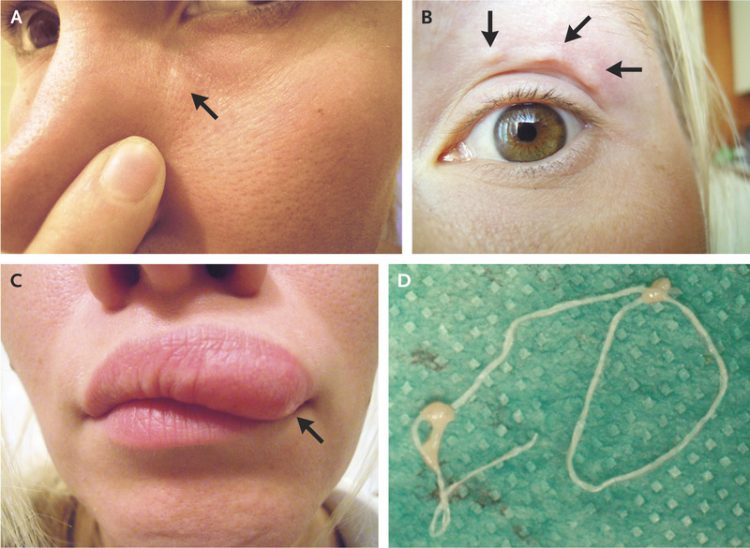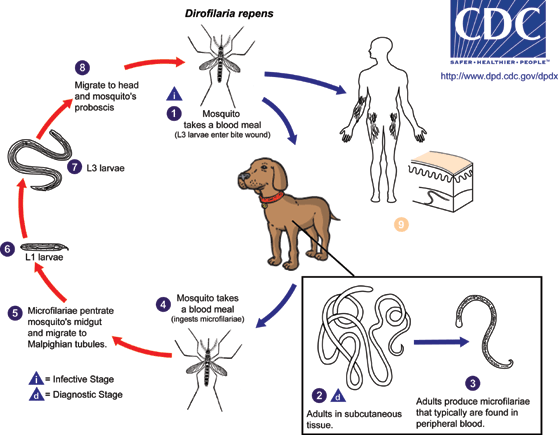Doctors in Russia recently reported the unusual case of a woman who noticed that a number blemishes appeared to move around her face every few days. Those blemishes turned out to be a live parasitic worm crawling under her skin.
The unnamed woman first noticed a small bump under her left eye, but didn’t pay too much attention to it until, five days later, when it disappeared only to be replaced by three larger blemishes above the eye. Then, 10 days later, those disappeared as well, but her upper lip became swollen. Disturbed by these symptoms, the Moscow-based woman sought medical help and ultimately learned that those strange bumps were actually a live parasitic worm called Dirofilaria repens slithering under her skin.

Photo: New England Journal of Medicine
The woman, who documented the strange movements of the blemishes through a series of selfies, had the worm removed under local anesthesia. Doctors managed to grip it with a forceps and pull it from under her skin. It sounds like the stuff of nightmares, but according to a paper published last year, there have been more than 3,500 cases of Dirofilaria repens reported between 1977 and 2016, in Europe alone, with reports becoming more frequent in recent years.
So how did the worm get under this woman’s skin? Well, according to Natalia Pshenichnaya, an infectious disease specialist at the Rostov State Medical University, in Rostov, Russia, it all starts with a bite from the common mosquito. The annoying bug picks up the parasite larvae from a host – dogs or other carnivores – and delivers them into our bloodstream when they feast on us. The parasite starts to grow and eventually starts moving underneath our skin.
In most cases, only one parasite enters our bloodstream, but there have been cases where more than one worm was discovered under the victim’s skin. The scariest thing is that without proper treatment or having the worm surgically removed, it can live under our skin for up to two years. The good news, if you can even call it that, is that it cannot reproduce inside our bodies.

Photo: CDC
The Russian woman was treated by Dr. Vladimir Kartashev, a professor of medicine at Rostov State Medical University, who had seen at least 10 other similar cases before. Upon hearing that the patient had recently been to a rural area outside of Moscow where she had suffered several mosquito bites, he had a good idea of what he was dealing with.
“The parasite can appear and disappear in few minutes,” Dr Kartashev said. “Doctors who are not familiar with the disease don’t believe … the patients. That’s why I asked the patient to make selfies.”
Although the size of the worm crawling under the Russian woman’s face hasn’t been revealed, research shows that females can grow up to 6.5 inches long, while males grow to nearly 3 inches. They can migrate all through the body, but in half of the 4,000 cases documented in Russia since 1997, they seemed to prefer the face.
This bizarre case was published in the New England Journal of Medicine, last week.






